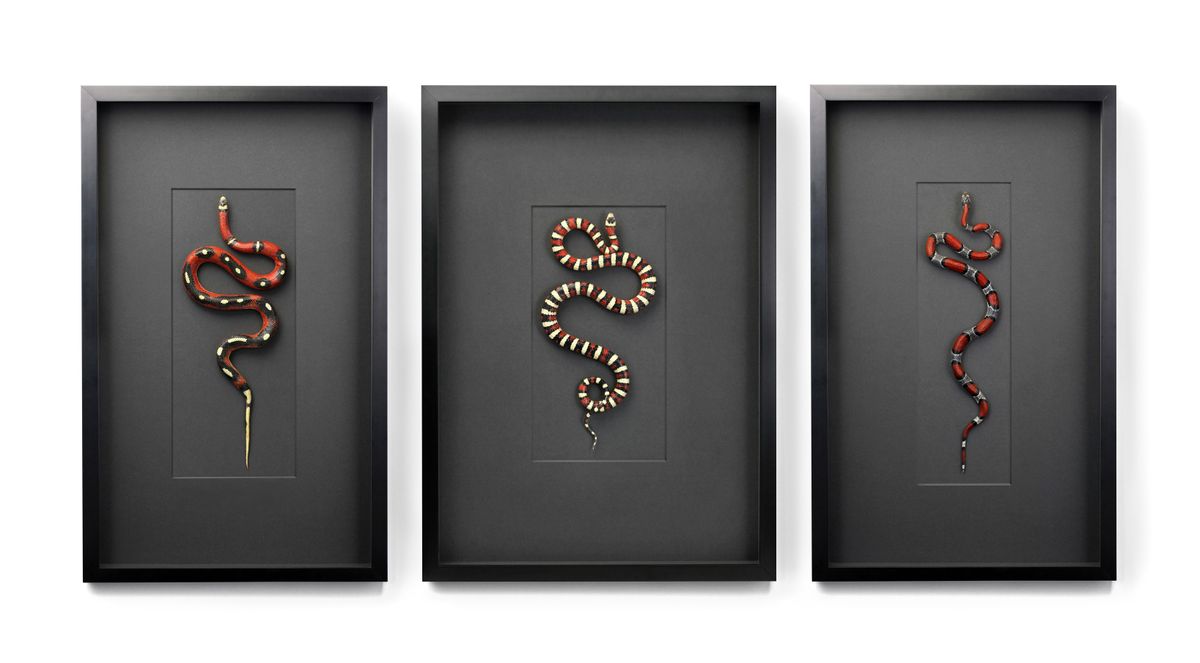Natural beauty
Snakes, insects and other organisms inspire marriage of art and science

Many would agree with naturalist David Attenborough that nature “is the greatest source of visual beauty.”
And that includes the creepy crawlies: From snakes’ skins to the intricate physiology of the smallest bug, we can’t help but be impressed by the beauty of creatures that buzz, flit and slither.
Artists and designers have long used insects, reptiles and other small animals as inspiration. Let’s grab our nets and catch a few of the most intriguing recent examples:
In his “Pheromone” series, artist and designer Christopher Marley of Salem, Oregon, marries his passion for crisp design with a fascination for insects, sea organisms and birds by arranging them simply yet artfully on plain backgrounds in shadow boxes. A stripey mountain kingsnake seems poised to meander north of the frame in which he resides. A prion urchin looks like a tiny alien spacecraft, sprung from the confines of the ocean floor. Dozens of beetles are arranged like the iridescent squadron of an entomological army. Butterflies form kaleidoscopic prisms.
The displays are an arresting mix of science and art. The specimens, which died of natural or incidental causes, come from museums, breeders and zoos around the world, Marley says.
“Sharing the thrill of discovery is one of the most driving aspects of my work,” he says. (www.pheromonedesign.com)
New York artist George Venson creates birds, snakes and octopuses in vibrant, painterly hues, and then arranges the images on wallpaper. He wants the walls to “come alive,” and there’s a sense of movement in each design. Snakes slither through backgrounds of ink, acid green or ruby. (www.voutsa.com)
In Osborne & Little’s exotic Komodo wallpaper collection, holographic foil lizards skitter across a black, silver or gold background. (www.osborneand little.com)
Los Angeles designer Paul Marra’s Snake Lantern forges two sinuous creatures into the form of a steel and brass pendant lantern. (www.deringhall.com)
Sculptor Mike Libby once found a dead beetle and got to thinking about how it had moved. He began dissecting and experimenting – at the same time taking apart an old wristwatch, and using those pieces – until he’d come up with the first of an ongoing collection of fantastical steampunk arachnids, bees and other creepy crawlies. He uses real insect carcasses and bits from watches, vintage typewriters and old sewing machines to fashion carapaces, wings, antennae and pincers for his mechanical menagerie. (www.insectlabstudio.com)
As Aristotle put it: “In all things of nature there is something of the marvelous.”